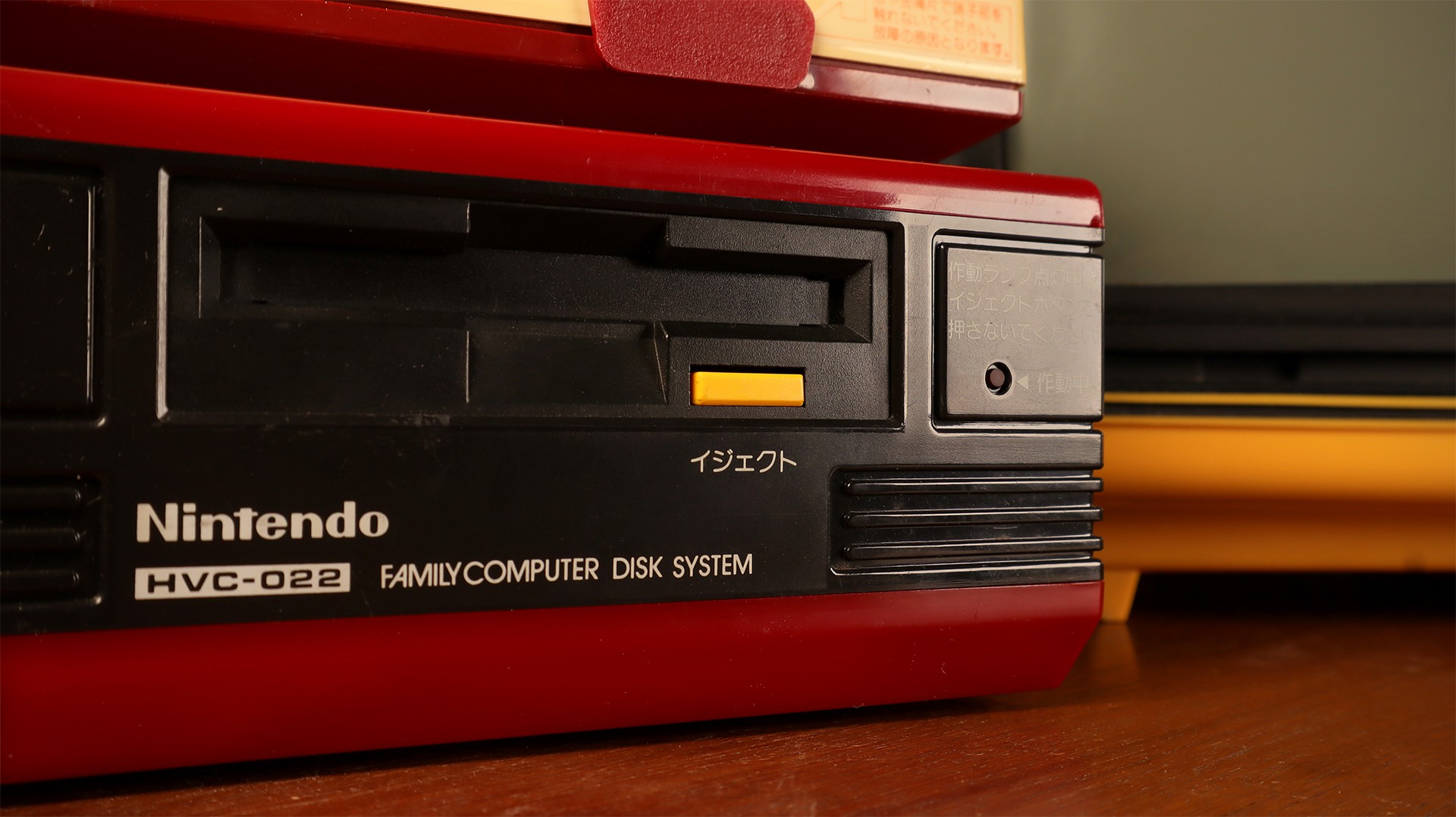
"The Nintendo way of adapting technology is not to look for the state of the art but to utilize mature technology that can be mass-produced cheaply."
Gunpei Yokoi was quoted as saying that in his book Yokoi Gunpei Game House. It was a philosophy that helped shape the Gameboy and was carried on to numerous future Nintendo consoles like the Wii or DS where well-understood and mature technology was used in new and novel ways. I'd like to believe this way of thinking was even used on Nintendo's earliest console add-on, the Famicom Disk System.
It was introduced in 1986, just as Nintendo fever had taken over Japan and was just starting in North America. The add-on used floppy disks - a well-understood format by then - to contain their games and boasted holding up to 128kb compared to the much smaller cartridges at the time. To entice gamers, disk games were sold at a cheaper price than their cartridge counterparts, and could even be rewritten at certain kiosks in stores. For a while, Nintendo seemed to think that floppies really were the future and released some of their biggest titles on the format like Metroid, The Legend of Zelda and Kid Icarus.
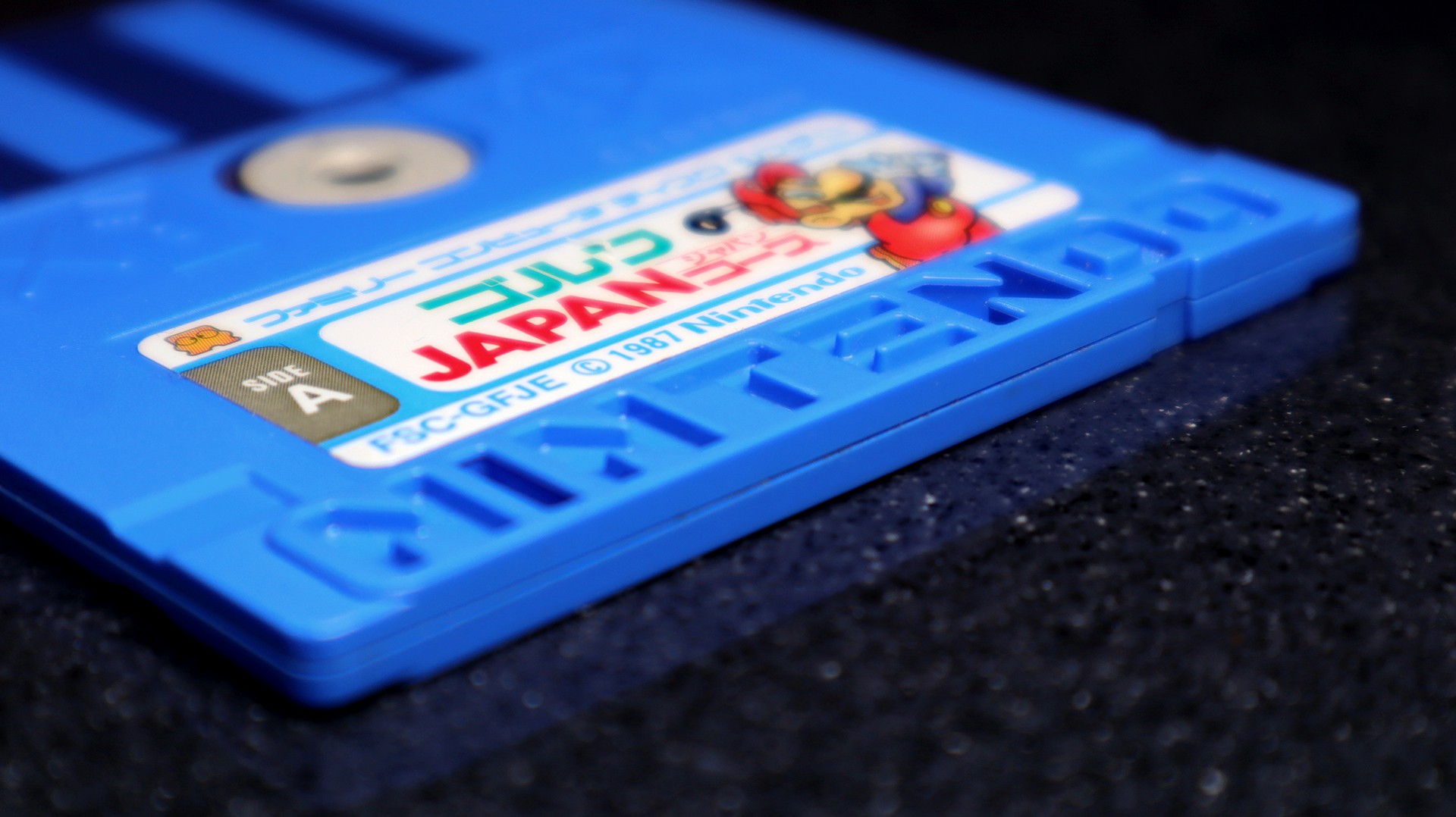
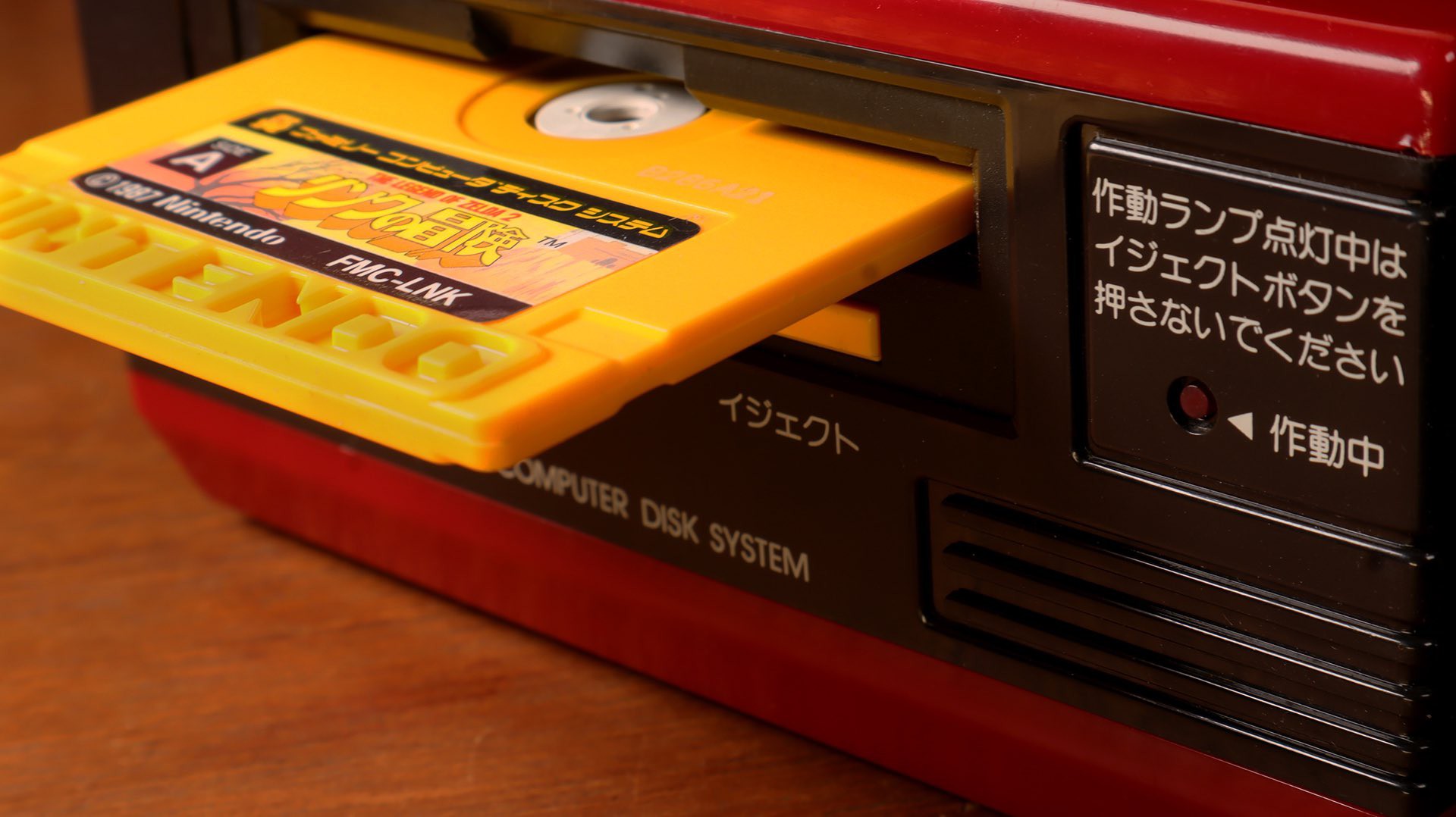
Don't copy that floppy!
Let's take a closer look at the floppy disks Nintendo used as well. Nintendo chose to partner with Mitsumi and use their Quick Disk format, which had previously been used on Roland and KORG sequencers to store tracks. Each of Nintendo's disks was branded with their name stamped on the bottom which served as a rudimentary form of copy protection since the stamped name needed to fit into an opposite piece inside the drive. The discs were also very colourful too and came in colours such as a bright yellow or a softer blue.
The disks were also unique since they were also in a sequentially read format instead of a random access one. Simply put, Nintendo's discs acted more like a tape cassette instead of the floppy disk we all know from earlier home computers of the era. The data is contained in one large spiral, and the read head only needs to go from one end to another instead of seeking it out. This means there are less complex mechanics inside where the head needs to know where it is in relation to where data is stored.
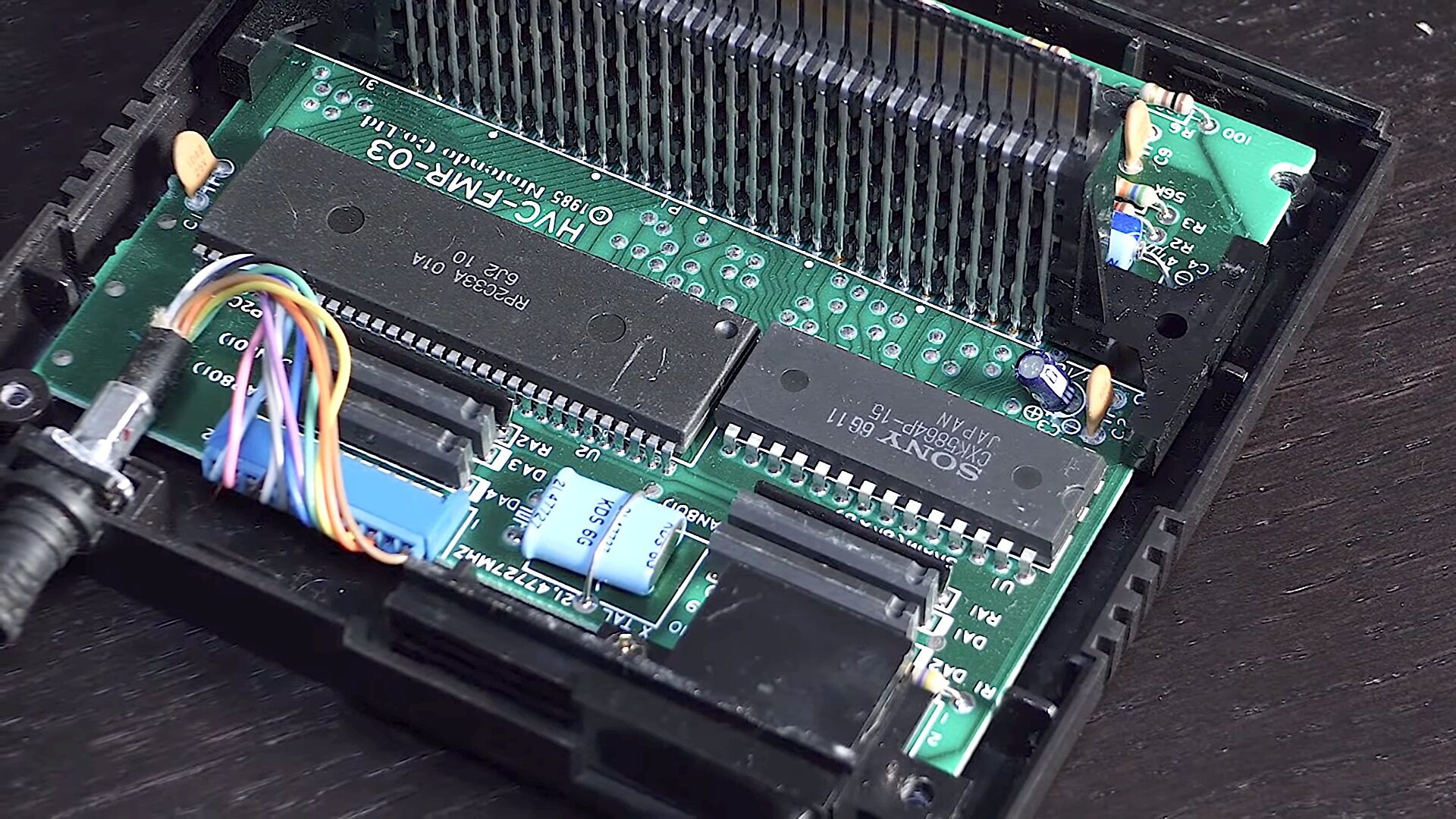
Credit: Eurogamer
The floppy drive was then interfaced with the console using a RAM adaptor. It contains a special connector to fit in the cartridge slot, a small amount of additional RAM, along with an ASIC that handles the serial data and also some sound processing. There was a planned and added-on port to the RAM adaptor that was never used, perhaps it was intended to link consoles together for multiplayer like the Gamecube or Xbox could do.
Nintendo was also surprisingly forward-thinking with their Famicom Disk System. Since data like saves and high scores could be stored on the disk, the company thought of how to share them in unique ways. One example was a competition held with Mario Golf, where disk owners could go to the kiosk they purchased the game from and fax their high score to Nintendo and receive a special cartridge from them!
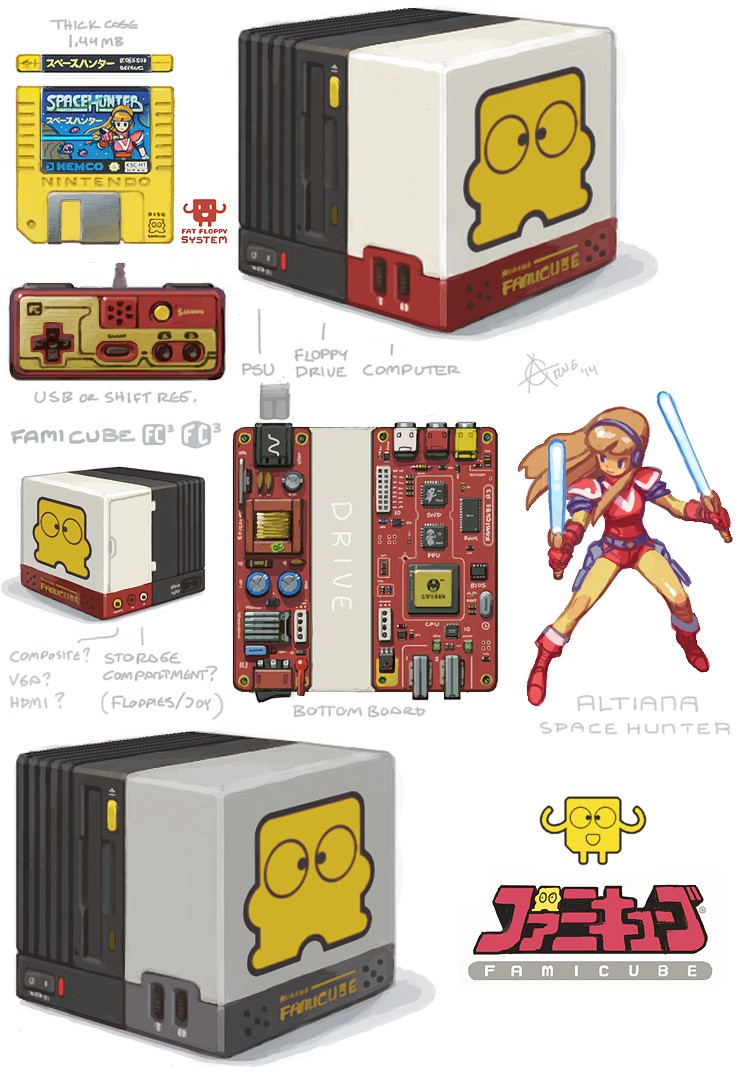

credit Android Arts
An Imagined Future
Unfortunately, as forward-thinking and unique as the Famicom Disk System was, technology becoming cheaper and piracy ultimately spelled the end of the add-ons life. Ghost 'N Goblins was released shortly after the add-on and boasted a 128k ROM on a cartridge format thanks to falling prices in storage. Piracy was also rampant for the system, and while Nintendo released revisions of the hardware to try and thwart pirates, it was ultimately a losing game. The system still went on to sell 4.4 million units and is still loved by many for the games it introduced.
Though, what if Nintendo had kept with the Famicom Disk System and their idea of storing games on floppy disks?
Arne, a self-taught artist, imagined such a future where Nintendo had partnered earlier with Commodore to try and branch off into the home computer market as well, but like many of Nintendo's joint hardware projects, had eventually split.
I was really enamoured by Arne's thoughtful designs and how he also went through several concept arts and revisions too. Everything was detailed and he documented his thoughts and philosophies well. I really admire his work, and one day I want to hone my skills to do what he's capable of. However, for now, I'll try my best to make his concept art a reality using my skills in prototyping, electronics, prop making, and 3d printing. Shrinking something down in size to be a cube won't be easy, especially considering that there's an entire drive mechanism to contend with if I'm using actual hardware.
 Reiko
Reiko
Discussions
Become a Hackaday.io Member
Create an account to leave a comment. Already have an account? Log In.